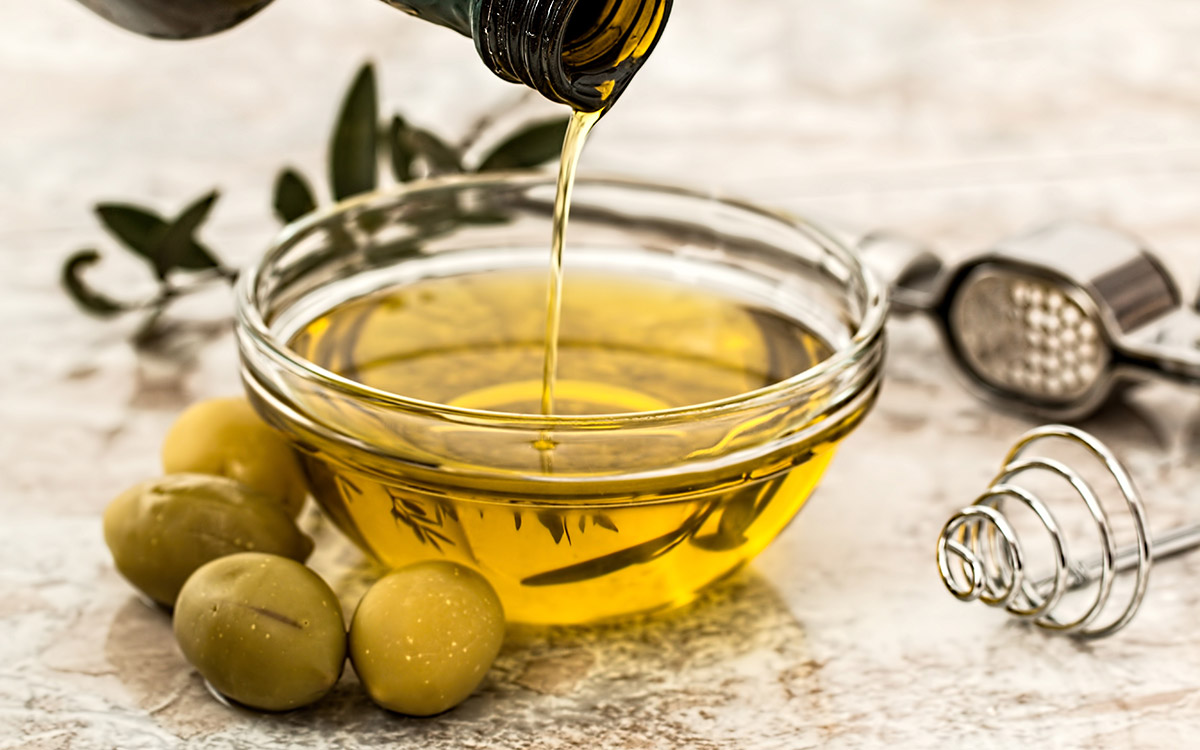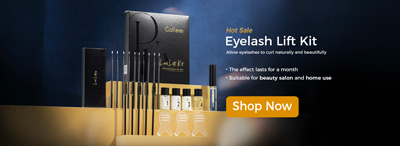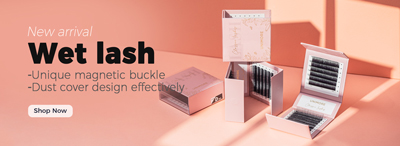Are your clients coming back to you with significant fallouts? Does it frustrate you that they didn't care for their lash extensions properly? Some of their favorite products could contain the culprit. One of such is oil. Here at Gollee Cosmetics, we recommend steering clear of oil and oily products. And here's why?
Oily products are a big no-no for people who have eyelash extensions because some oils can break down the glue. Also, oil is hard to clean up, and if you get some on your eyelashes, you might have to rub them hard to get it all out.
Interested in knowing more about why you avoid using oils when wearing lash extensions? Read on! We break it down for you in this article and tell you which major oils to stay away from.
- 1 How Do Oils Affect Your Lash Glue?
- 2 4 Types of Oils to Avoid at all Cost
- 3 Must You Keep Your Lash Extensions from All Oils?
- 4 What Else Must You Avoid When Wearing Lash Extensions
- 5 Everything Else You Need to Know About the Lash Glue Ingredients
- 6 Home Habits to Preserve Your Eyelash Extensions
- 7 Conclusion
How Do Oils Affect Your Lash Glue?
Putting oil on lash extensions is a bad idea. We know oil products are suitable for our skin in many ways, but oil is not the best for eyelash extensions. Oil breaks down the glue's hold on your natural lashes and the extensions, which makes the extensions fall off too soon.
As you probably know, glue contains cyanoacrylate, a resin that dries quickly. Because oil breaks down the cyanoacrylate bond, it affects how long the lashes will last.
If your client ever WANTS to remove their lash extensions themselves, coconut or jojoba oil are great products. However, it's always best to see a professional. Proper assessment and gentle handling of the lashes are always better than home removal!
Moreso, these oils might not be enough to get rid of the extensions for good. If a client doesn't want to get lashes anymore, always tell them to make an appointment with you for a healthy lash removal, so they don't get hurt. Since these are medical adhesives, they shouldn't come off entirely without the help of a professional.
4 Types of Oils to Avoid at all Cost
There are oil-based beauty products everywhere. From cleansers to balms to moisturizers to serums, you have to be very careful about what you put on your eyelashes. Even some eyeliners and mascaras have oil in them, but you shouldn't be using mascara if you have eyelash extensions. So what are the four types of oils to avoid?
- Mineral oil.
- Vegetable oil.
- Coconut oil.
- Canola oil.
Must You Keep Your Lash Extensions from All Oils?
No! some are safe to use with lash extensions. A few of them are:
- Coleus Forskohlii Root Oil
- Castor Seed Oil
- Sweet Almond Oil
But in general, usually, if you can't identify what oil you have before you, keep it away from your lash extensions.

What Else Must You Avoid When Wearing Lash Extensions
There are some "physical activities" to avoid when wearing lash extensions. There are some products to avoid too. Some of them are:
Rubbing:
Try not to rub your eyes or play with your eyelashes as much as possible. When you rub your eyes, the friction can bend your eyelashes out of place, and a loose fingernail or knuckle can sometimes even pull them out.
Eyeliner:
Don't use eyeliner made of wax. Instead, use one that of a liquid or a gel. Even if you use a makeup remover, pulling off the pencil liner could pull out some eyelashes and leave behind a residue on the eyelashes. One alternative to eyeliner is to have longer eyelashes that make it look like you have eyeliner on.
Crying:
Even though you can't always avoid this, tell your clients to use a cleanser to eliminate traces. The same is true if you have hay fever or watery eyes because the solution in your tears will affect how well your eyelashes stay in place.

Makeup Remover:
Avoid oil-based makeup removers at all costs. The polar part of these removers breaks the bond between your eyelash extensions, which makes the extensions fall off.
Face Creams Or Sunblock:
Many moisturizers and sunblocks contain oils that can stop eyelash glue from sticking properly to your natural lashes. This makes your eyelash extensions fall easily.
Sweating:
Another thing that breaks down lash glue is sweat. If you sweat a lot or go to the gym right after getting your lashes done, it can affect how long they last because it breaks down the glue.
Eyelash Curlers:
If you have eyelash extensions, the only reason you'd want to use an eyelash curler is to curl your natural lashes to match the curl of your extensions. When you get eyelash extensions, the curl is already there. If you want your extensions to curl more, you can make a new appointment with your lash stylist or wait until your next fill.
Everything Else You Need to Know About the Lash Glue Ingredients
Once again, our culprit for the article is oil. And the target is the lash adhesive. So, here's a little more about the glue.
The adhesive used for eyelash extensions contains adhesive chemicals. Also, there are thickening, stabilizing, and coloring agents. It may also contain additional substances for different functions.
"Cyanoacrylates" are the primary glue in lash adhesives. They can quickly and adequately stick to skin, hair, and other organic tissues, as well as wool, leather, and natural fibers. This instant lash extension glue is also in Super Glue and Krazy Glue. In the business world, we call it "CA."
You need to know that the type of cyanoacrylate used in Super Glue is different from the one used to glue eyelash extensions together. In fact, ethyl, methyl, butyl, octyl, methoxy, alkoxy, and other things can get added to cyanoacrylate. These make different types of glues that stick different things to different surfaces. So, what are these ingredients that make up most lash adhesives?
Ethyl Cyanoacrylate:
This is the most common type of cyanoacrylate used in lash glues today. Ethyl cyanoacrylate is thicker than other lash glues. It has a fast drying time, and many companies making glues based on ethyl cyanoacrylate say they stick for up to 6 weeks.
When you get down to it, cyanoacrylate comes from cyanide and acrylate. Cyanide makes the glue thicker, and acrylate, which comes from acrylic acid, helps the glue harden when left out in the open air.
Poly Methyl Methacrylate (PMMA):
PMMA is the main thing that makes the extension fiber stick to your natural lashes. It comes from acrylic and has a slight stickiness. The general rule is that the more PMMA an adhesive has, the longer it will hold.
Hydroquinone:
Also known as "the lash antioxidant." It is another common ingredient in eyelash glue. The most important thing is that it keeps the glue from drying quickly. The good thing about hydroquinone is that it stays in liquid form but turns solid as soon as it touches air.
Black Carbon:
Do you know what gives the black lash extension its deep, dark color? It comes from black carbon.
Carbon black is nothing more than burned hydrocarbons or soot. We often use it in cosmetics like eyeliners, mascaras, eye shadows, eyebrow pencils, etc.
If you use a black adhesive, your eyelash extensions will look more natural than a clear one. But transparent lash glues still have a place because some clients may be sensitive to the carbon black in most lash adhesives.
Formaldehyde:
Formaldehyde is a chemical with no color and a place in the beauty industry. The enzymes in our bodies break it down into acids and gases. If you've ever had your hair smoothed, straightened, or even treated with keratin, you've already been around formaldehyde fumes.
During the process of getting eyelash extensions, formaldehyde gases sublime off when the cyanoacrylate in the lash glue hardens. Small amounts of formaldehyde are safe to be around during the lash appointment. But getting exposed to too much formaldehyde can cause problems. So, you might ask, is there glue for eyelash extensions that don't contain formaldehyde? No, is the short answer.
Formaldehyde is NOT one of the things that are in lash glues. It comes off when cyanoacrylate, which is in all lash glues, hardens. No eyelash glue doesn't contain cyanoacrylate. Now some types of cyanoacrylate will give off more formaldehyde fumes than others. So it is essential to choose a good lash adhesive that will limit exposure as much as possible while keeping the extensions in place.
Home Habits to Preserve Your Eyelash Extensions
If you are just as obsessed with your lash extensions as we are, no doubt your next thought after leaving the salon is, "how do I preserve my extensions?" We hear you! Here are some home habits you can employ:
- Keep them dry
- Sleep on your back
- Clean and brush them.
- Avoid waterproof
- Schedule regular fills

Conclusion
There you have it! We hope this article has all your answers. At Gollee Cosmetics, we love to see our clients and retailers have a great experience with extensions. Now you know which oils to avoid and which are safe to use.







